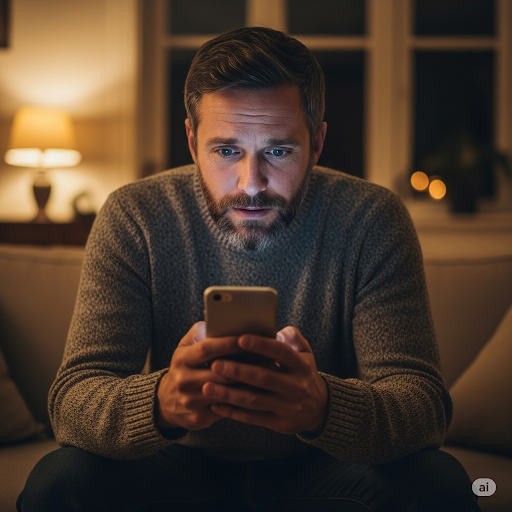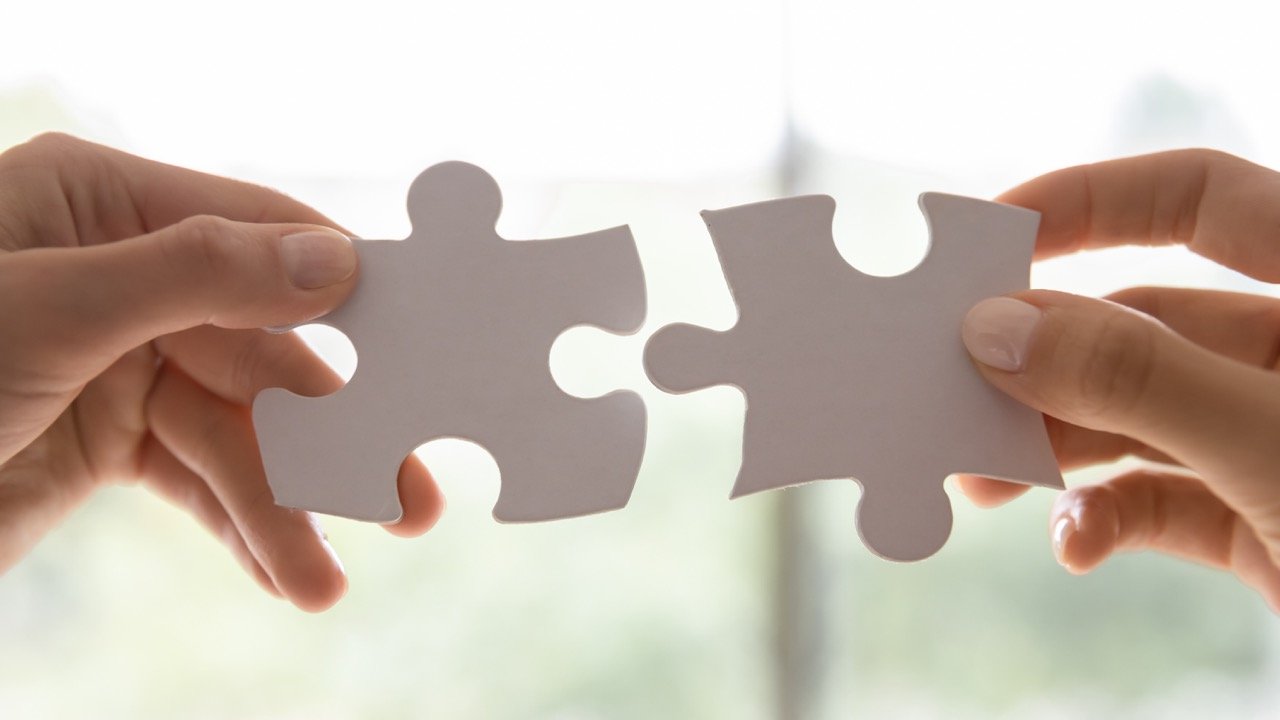Helping Your Relationship Survive a Quarantine — 20 Tips From Attachment Theory
“To the quarantine”, she toasts, clinking her wineglass against her partner’s and smiling up at him. “No one I’d rather be stuck at home with than you, dear.” A common reaction to the virus-imposed quarantining across the world? For some, perhaps, but for many people, social isolation or isolation with one’s significant other is creating a new kind of stress. And we can look to attachment theory to help explain why, and what to do about it.
With an increasing number of people isolating themselves comes a new set of relational challenges. Some singles who are used to being alone at home are additionally frustrated that they can’t go out and meet people, others are bemused that people are complaining about solitude when they themselves have experienced loneliness for years. And then there are couples who are experiencing a new strain on their relationship — the strain of being around each other more than they are used to. Some couples are weathering this with ease and even enjoying the extra time together, but for many couples, the close quarters place an unwelcome strain on their relationship, particularly if underlying issues were already underfoot. Financial and health concerns are heightened for most, and only add fuel to the flames.
Some couples are experiencing increased fighting and disputes, sometimes even over simple things. “Why does he assume I can talk while I’m making a sandwich”, one person complained to me recently about their partner. “She gets mad at the stupidest things. Like does it matter if my socks are on the bathroom floor? We’re in the middle of a freaking pandemic. Who cares where my socks are.”
Anytime we experience stress from our environment, it can impact a romantic relationship. We turn to our relationships for comfort and stress relief, but can there be too much of a good thing? Yet some couples are handling this with more ease than others, and we can find some answers in attachment theory.
Here’s attachment theory in a nutshell:
Developed in the 50s out of infant-parent relating studies, attachment theory separates people into 4 categories of romantic attachment, or bonding, with a partner (this is attachment in the “bonding” sense, not the Buddhism sense). Research shows that we have a certain style of bonding with a primary caregiver which follows us into adulthood and our romantic relationships.
The 4 attachment styles and common traits:
Secure attachment style (aka anchor):
Enjoy working with others and collaborating
Form lasting relationships with relative ease
Are attuned and read people well, including body language and voices
Ask for help easily and offer help easily, expect their needs to be met by others
Avoidant attachment style (aka island):
Enjoy their alone time
Can feel crowded by intimacy
Have trouble shifting from alone to interacting
Work-oriented and good at focusing on projects
More focus on self, more focus on what is going well in life
Ambivalent attachment style (aka anxious or wave):
Have trouble shifting from interacting to alone time
Focus on external regulation, ask for help to be soothed by others
Can be hyper focused on relationships, but emotionally attuned to people’s needs
May use complaining as a way of connecting
More focus on others, more focus on what isn’t going well in life
Disorganized attachment style:
Alternate between avoidant and ambivalent styles, some people leaning more toward either avoidant or ambivalent, some people oscillating
Have an additional fear component, often born out of trauma which can take many forms. This fear causes a freeze response, which may be subtle and look like dissociation or “spacing out”
Have quick emotional state shifts, often get triggered easily
Often have a childhood with unpredictable, chaotic, or dangerous attachment figures (e.g. alcoholic parents)
People typically have a primary attachment style, or one style that is stronger than the others, but essentially everyone is a blend of these 4 different styles. Keep reading to find out why that matters in a quarantine and what to do about it.
Why your attachment style matters in a quarantine:
When you have a primary attachment bond with someone (like in a romantic relationship), you interact with them in some of the same ways you did with your Mom or Dad at a very basic level. What I mean by this:
Someone who is avoidant is not used to depending on others for support, and is used to having their alone time. The avoidant attachment style if formed when the primary caregiver is absent a lot or focused primarily on task-based interaction. The child learns they need to take care of their own emotional needs.
When the avoidant adult is put into close quarters with a partner without being able to go to work, they may resort to other withdrawal strategies even more than usual. This might look like video games, television, Internet, even meditation rather than close connection with another person. This strategy can work somewhat well for them during normal times, but when work is unavailable as an outlet and their significant other is around more than usual, they can feel encroached upon or suffocated, particularly if their partner has an Ambivalent (aka anxious) style and wants to connect a lot. They can begin to notice all the little faults of their partner (another avoidance strategy), and this can lead to fights.
Someone who is anxious is used to depending on others for emotional support and soothing. As a child, their primary caregiver was inconsistent with care, so that sometimes they got the love and connection and attunement they wanted, other times they did not. As a result, they are looking for reassurance that their attachment figure is going to stay put. As an adult, if they are with another ambivalent during a quarantine, this may be easier if both ambivalents can control their anxiety and soothe each other. If the ambivalent is in a primary romantic relationship with an avoidant, they will likely be more used to connection and be looking for external reassurance, which can put stress on an avoidant partner.
A very anxious person and a very avoidant person will have more difficulty in a quarantine and can benefit from some of the strategies below. In attachment theory, we call this relationship the Anxious Avoidant Trap. Such a relationship can survive, but only when its participants are armed with knowledge of their attachment styles and coping strategies.
The disorganized person can frequently feel unsafe, with a nervous system that is on edge. When the external world feels extra unsafe, like in a global pandemic, they will benefit from extra measures to calm the nervous system — meditation, mindfulness, and relaxation practices are essential. Two disorganized folks in a relationship will have an especially hard time of it, and benefit from self-soothing practices as well as tools like Compassionate Communication.
Two secures will have the easiest time of all, finding humor despite the chaos and a refuge in their partner. They like having adventures together, and external problems will be seen as a challenge they can tackle together. They are good at regulating each other, calming each other down. They each have the other's operating guide, so to speak, and are skilled at soothing themselves and each other. Quarantine: “It was great, we got to spend so much time together!"
If You’re in a Relationship with Someone with an Avoidant Attachment Style: :
Try not to take criticism personally. Recognize it as a withdrawal strategy and information that they are overwhelmed. Find out if they need space; they may not be practiced at recognizing or voicing their needs.
Give them some time to connect. Remember it can take them longer than the other types to transition from alone time to connection.
Avoidants can get impatient with long personal stories, so practice making your information and storytelling concise.
Conflict is especially hard for them, so be compassionate and attuned to how they’re doing with it. Check in if it is too much and the two of you can revisit in an hour, or take a break. Take breaks so fights stay under 15 minutes. Don’t try to push through, as it will be dysregulating for them, and they’ll feel threatened which will make conflict less likely to be resolved.
Recognize that asking for help is a challenge, so if they do ask to connect, take it seriously and show up as best you can.
Recognize that they are used to playing alone, and isolating will be more familiar to them than some of the other types. Don’t try to force extra connection when they’re already getting more connection with you than they’re used to (such as during a global pandemic where everyone is staying inside).
If You’re in a Relationship with Someone with an Ambivalent Attachment Style:
Giving them reassurance will make them more secure and less anxious, particularly reassurance that you care about them. Be consistent in your attention.
If they pick a fight with you, they may be wanting connection. Try not to take it personally, and instead ask what their underlying need is. Gently remind them that you are on the same team, and you aren’t going anywhere.
Take breaks so fights stay under 15 minutes. Make sure the two of you are only addressing one topic at a time, since their tendency will be to cover multiple topics which can be counterproductive.
If you’re separating, they may seem overly anxious. Reassure them that you’ll be back at a certain time and stick to it. Tell them you care about them. Stay in regular contact through phone and text while you’re away.
Help them learn to self-regulate so they don’t have to over-depend on other people to soothe them. Take an online class together on mindfulness, managing emotions, or breathing exercises, for example.
Help them verbalize their needs more effectively so they don’t need to complain to get their needs met. Compassionate Communication is a tool that can help us communicate needs and feelings in a loving connected way.
If You’re in a Relationship with Someone with a Disorganized (Fearful Avoidant) Attachment Style:
Use tips above from Avoidant and Ambivalent, depending on whether they are currently in an ambivalent or avoidant stance
Communicate in simple and clear terms, especially if they seem disoriented or spacey. Minimize the number of options you’re presenting if you’re offering them suggestions and asking them to make a decision.
Practice safe and appropriate touch. Touch can be incredibly regulating when it comes from a safe, loving place. Patti Wood states that a handshake can be as regulating to the nervous system as 3 hours of affirming conversation.
Be kind with your words and your vocal tone. The disorganized attachment stems from an unsafe or chaotic environment, and its antidote is safety and care.
If You’re in a Relationship with Someone with a Secure Attachment Style: :
You’re in luck, they are likely to be resourced, playful, and grounded. But don’t assume that they are impervious to life’s problems, or that they will clean up after all your relational messes.
Own your stuff, and look out for their needs too.
For Anyone:
Use endearing terms even when you’re disagreeing. “Babe, I love you, and I’d also love it if you could hang up the towel after you shower."
Lean into connection even when you’re fighting. Throwing in a phrase like, “I love you so much, I really want to understand what you mean by that” can prevent a disagreement from turning into an argument.
Stan Tatkin suggests keeping fights under 15 mins, then taking a break, to prevent them from being encoded into the nervous system.
Work on your attachment style by making your own attachment more secure. See my resource at the end of this article.
This natural-disaster induced discord isn’t new. Hurricane Katrina in New Orleans, which resulted in approximately 800,000 homes destroyed and couples spending for example 16 hours together in the car, was followed by a slew of divorces. But knowing about attachment theory and taking appropriate steps will help. Separations happen when attachment systems get threatened and people don’t know how to reconnect with each other.
Whatever attachment patterns people already have will be exacerbated by forced time together. I often recommend people take a vacation together early on in a relationship to test the waters and find out how a partner responds to asking for one’s bid for connection and asking for needs to be met.












Coaching clients often tell me they’re worried about “being too much” in relationships. So many of us have felt this — an internal voice that tries to keep us small, a quiet reminder not to take up too much space, not to need too much, not to feel too deeply.
That fear of being so whatever that it pushes someone away. This feeling can come from a part of us that fears rejection or abandonment or lack of love. In attachment terms, this part is often linked to an anxious attachment pattern — a protective strategy built around the hope that if we stay agreeable and easy, love will stay too.